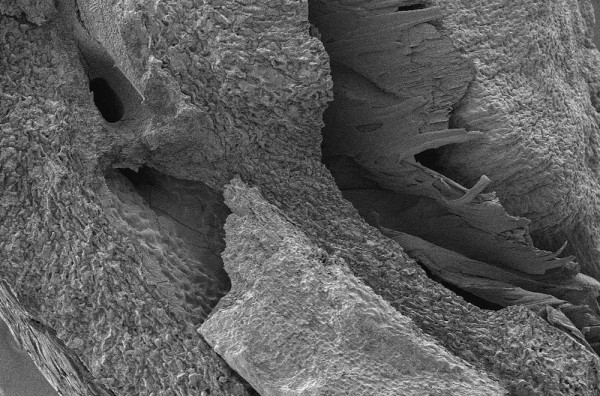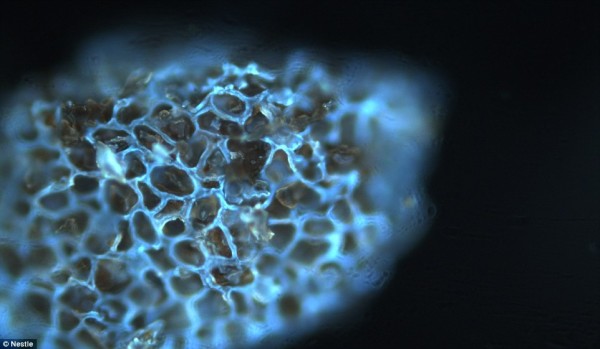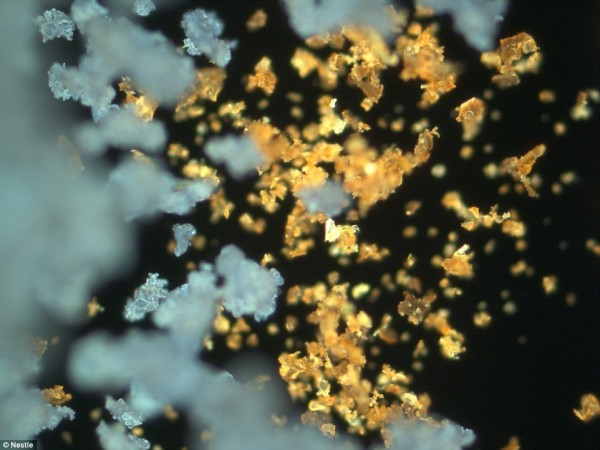Nestle has released a series of science-psychedelia images showing coffee and a number of its common additives and condiments on a particle scale. The electron-scanning and florescence microscopy images were captured by Nestle’s own in-house food scientists, and as Nestle describes, they “reveal hidden worlds in everyday products.”
They are also awesome wallpapers for your smartphone. For more Nestle photos, check out the company’s Flickr.
Green Coffee
What looks like a cave system in Utah is actually the interior of a green coffee bean.
Says Nestle, “Changes that occur to a coffee bean’s internal structure during roasting can have an impact on its overall quality.”
Coffee Cell Structure
This lovely blue mass resembling some kind of sea anemone is actually an image of the cell structure of roasted and ground coffee.
Sucralose
No, this is not a bottle of Goldschlager. It’s actually particles of the non-caloric sweetener sucralose combined with particles of ground coffee.
Cappuccino
This is what Nestle describes as the “foam booster” particles that make milk foam possible. From Nestle: “Cappuccino ‘foam booster’ granules are particles of carbohydrates and protein loaded with gas bubbles. When they meet in hot water, they release the gas, lifting the creamer to the surface to form an instant, milky foam.”
Freeze-Dried Coffee
These are micro gas cells and cavities produced in freeze-dried coffee, which when in contact with hot water create “crema,” by Nestle’s definition.
Nick Brown
Nick Brown is the editor of Daily Coffee News by Roast Magazine.











Comment